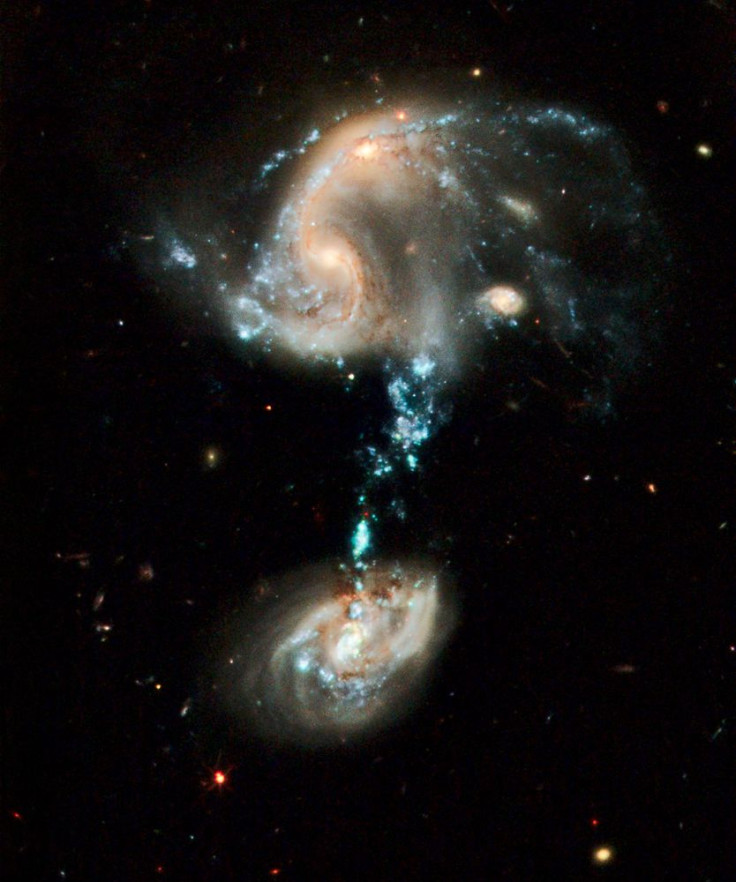NASA Shares Incredible Photo Of Cosmic Fountain Made By Interacting Galaxies

KEY POINTS
- NASA shared a photo of interacting galaxies captured by the Hubble Space Telescope
- A fountain-like structure was formed between the interacting galaxies
- Arp 194's fountain is filled with gas, dust and multiple star-forming regions
NASA recently shared a stunning photo captured by its Hubble Space Telescope. The photo shows a cosmic fountain of stellar material created by the interaction of at least four different galaxies.
The subject of Hubble’s photo has been identified as Arp 194. It is located in the Cepheus constellation and is about 600 million light-years away from Earth.
As noted by NASA, Arp 194 is composed of multiple galaxies interacting with one another. The upper portion of the massive cosmic structure features two galaxies that are currently in the process of merging with one another. The merger was most likely caused by a collision between these two galaxies.
Located somewhere near the right side of the galactic merger is a spiral galaxy. Below this cluster is another marge spiral galaxy. The blue star-forming regions of this galaxy can be spotted in Hubble’s photo.
Connecting the upper and lower portion of Arp 194 is a stream of cosmic material that slightly resembles a fountain. According to NASA, this cosmic fountain contains massive star clusters, each of which has its own stellar cluster composed of young stars. NASA estimated that the entire cosmic fountain contains millions of stars.
According to the agency, the stream-like formation measures about 100,000 light-years long. Aside from star formations, this structure is also filled with cosmic gas and dust. As noted by NASA, the bluish color of Arp 194’s fountain is caused by the light emitted by the massive stars within each cluster.
NASA explained that the stream of stars, dust and gas was most likely formed by the interaction of the galaxies within Arp 194. According to the agency, as the different galaxies merged and interacted with one another, the cosmic gas surrounding them got compressed, triggering an accelerated star-forming rate.
“These young star clusters probably formed as a result of the interactions between the galaxies in the northern component of Arp 194,” NASA explained in a statement. “The compression of gas involved in galaxy interactions can enhance the star-formation rate and give rise to brilliant bursts of star formation in merging systems.”
© Copyright IBTimes 2024. All rights reserved.




















